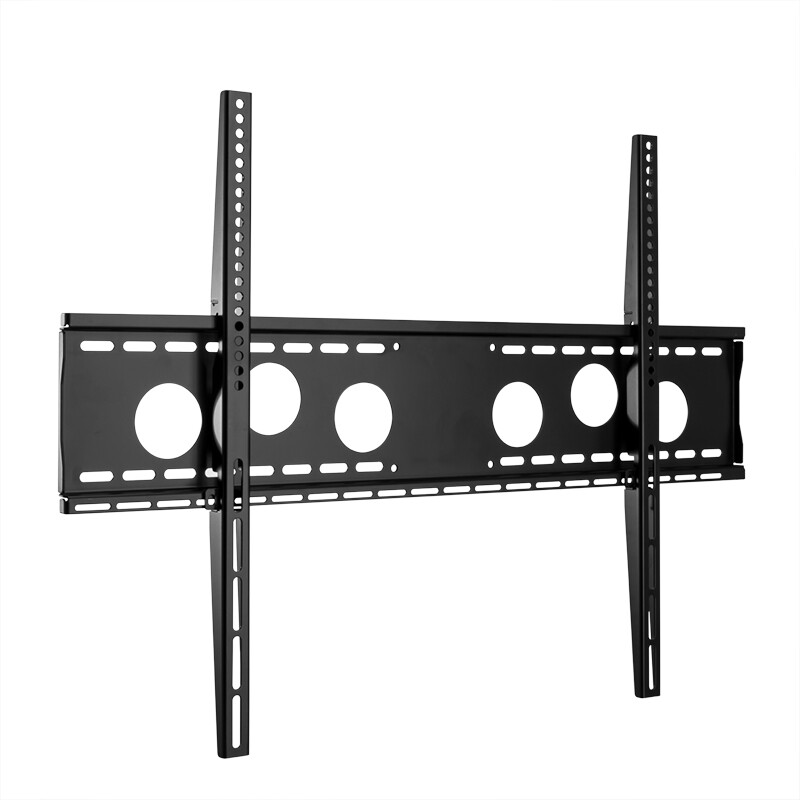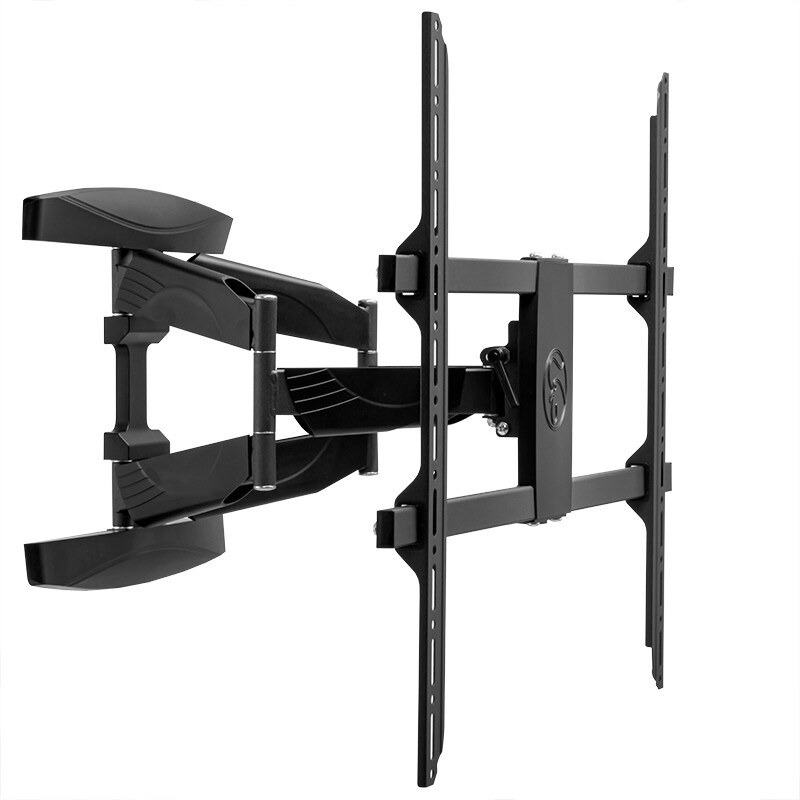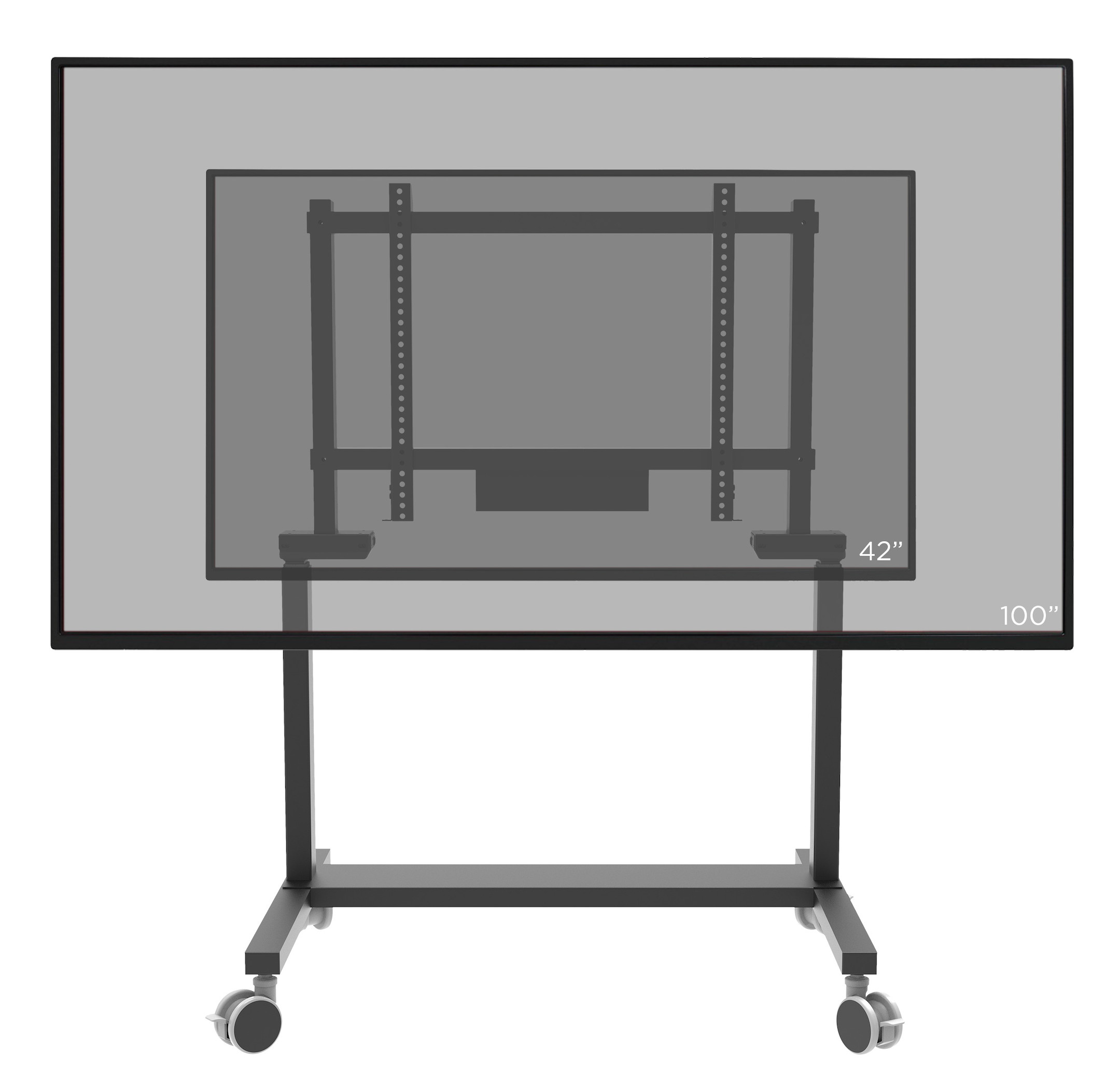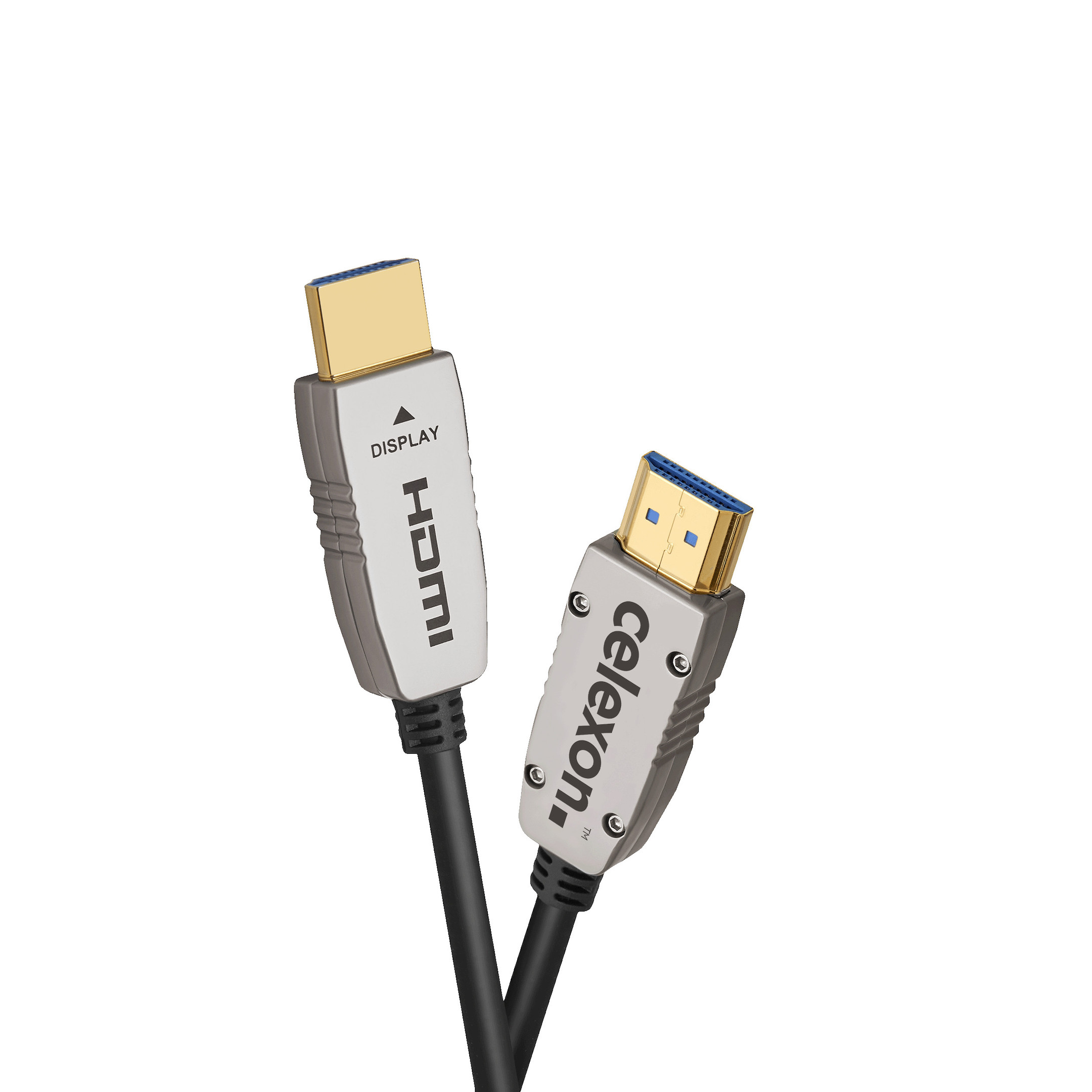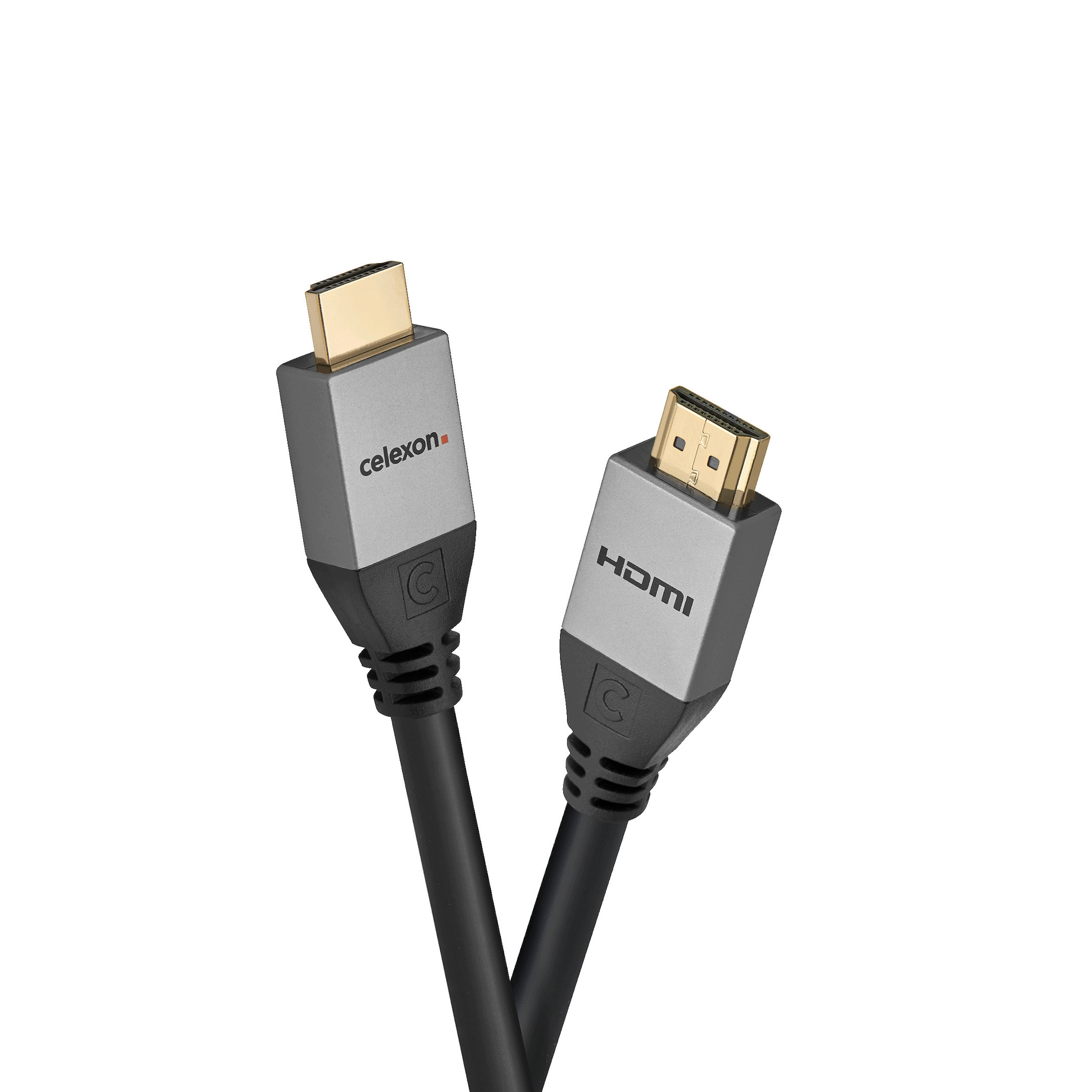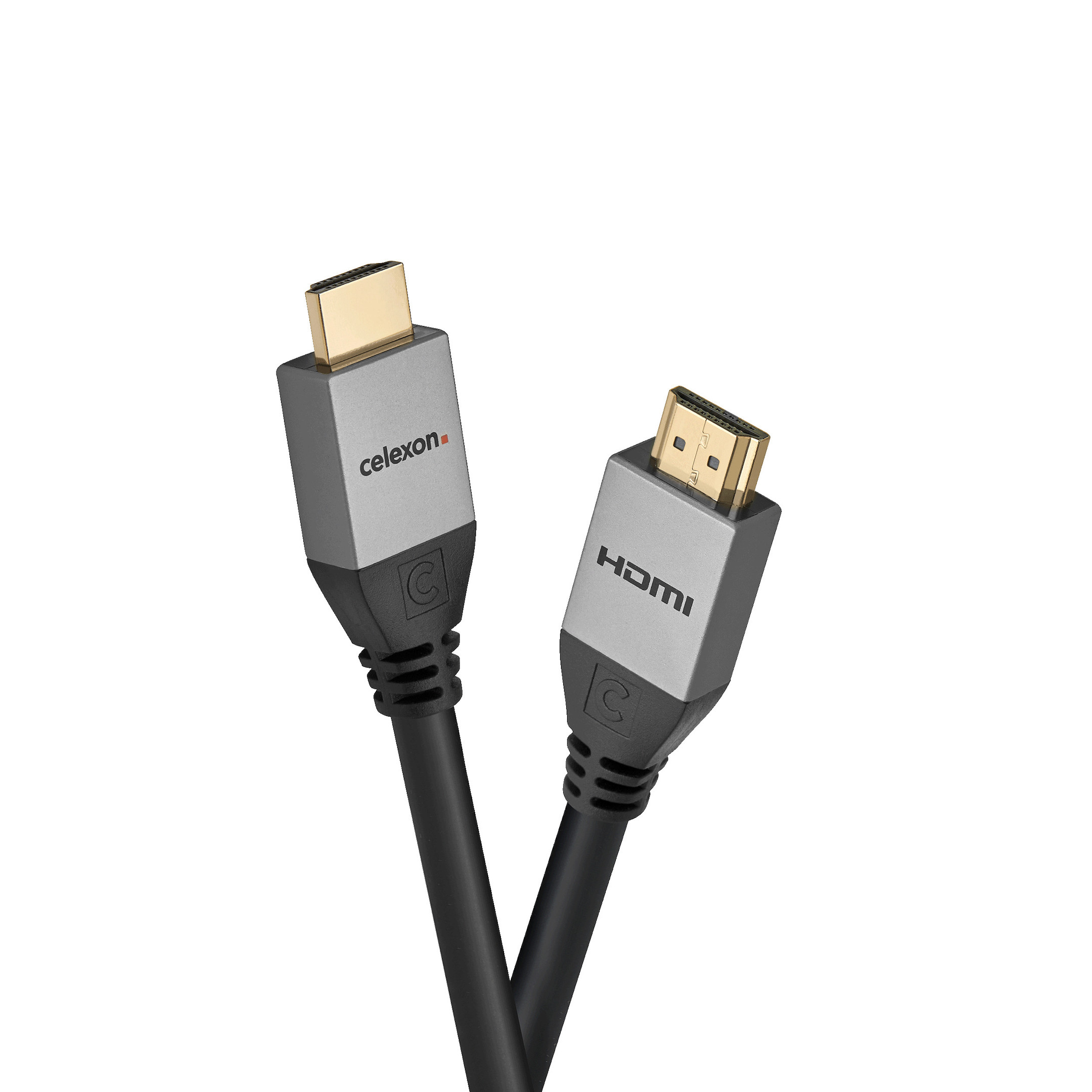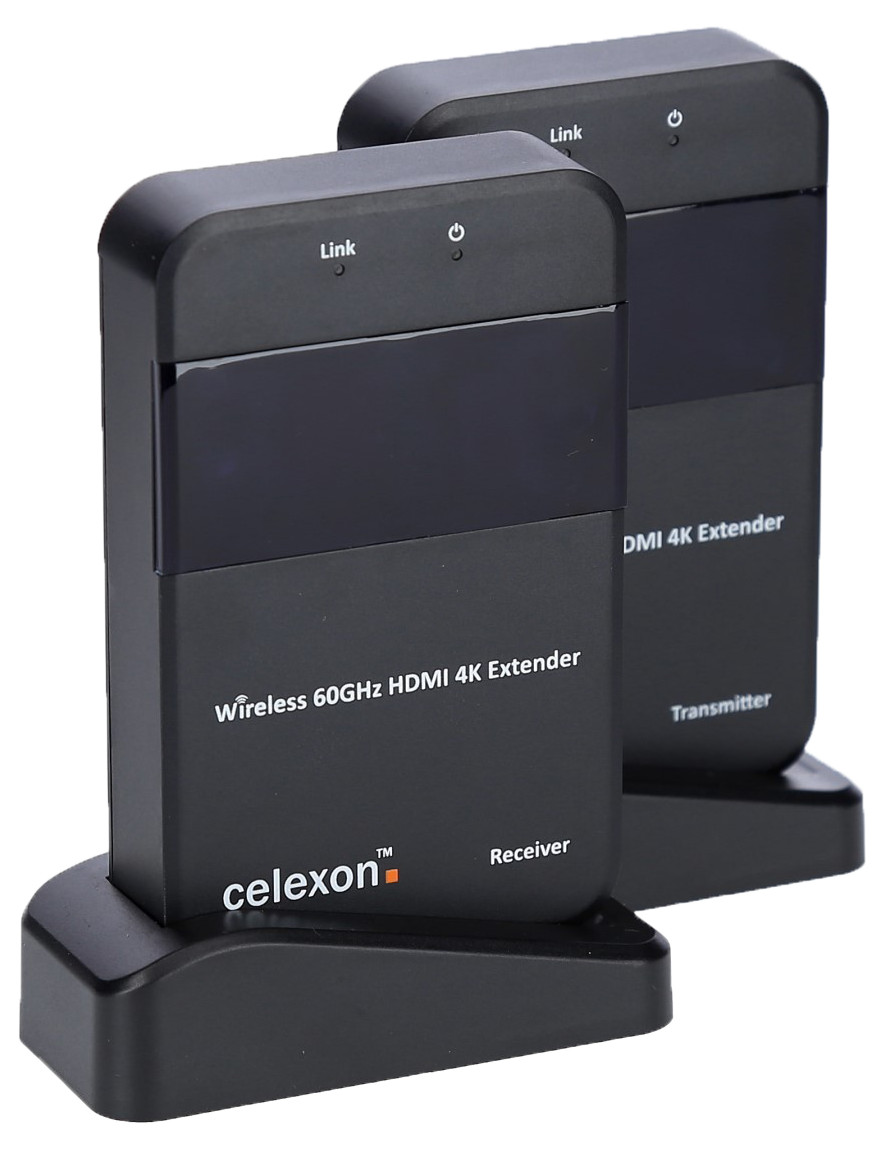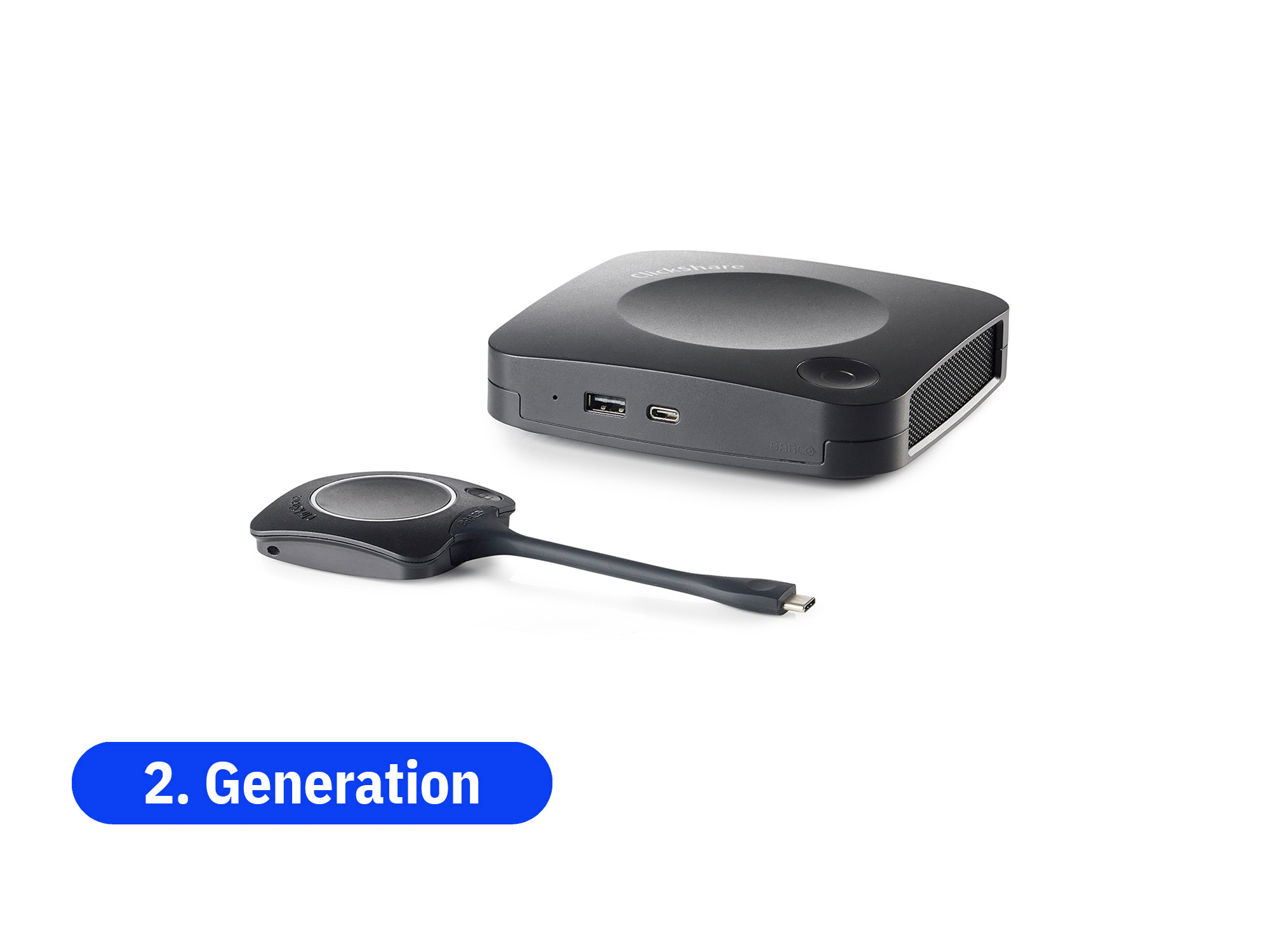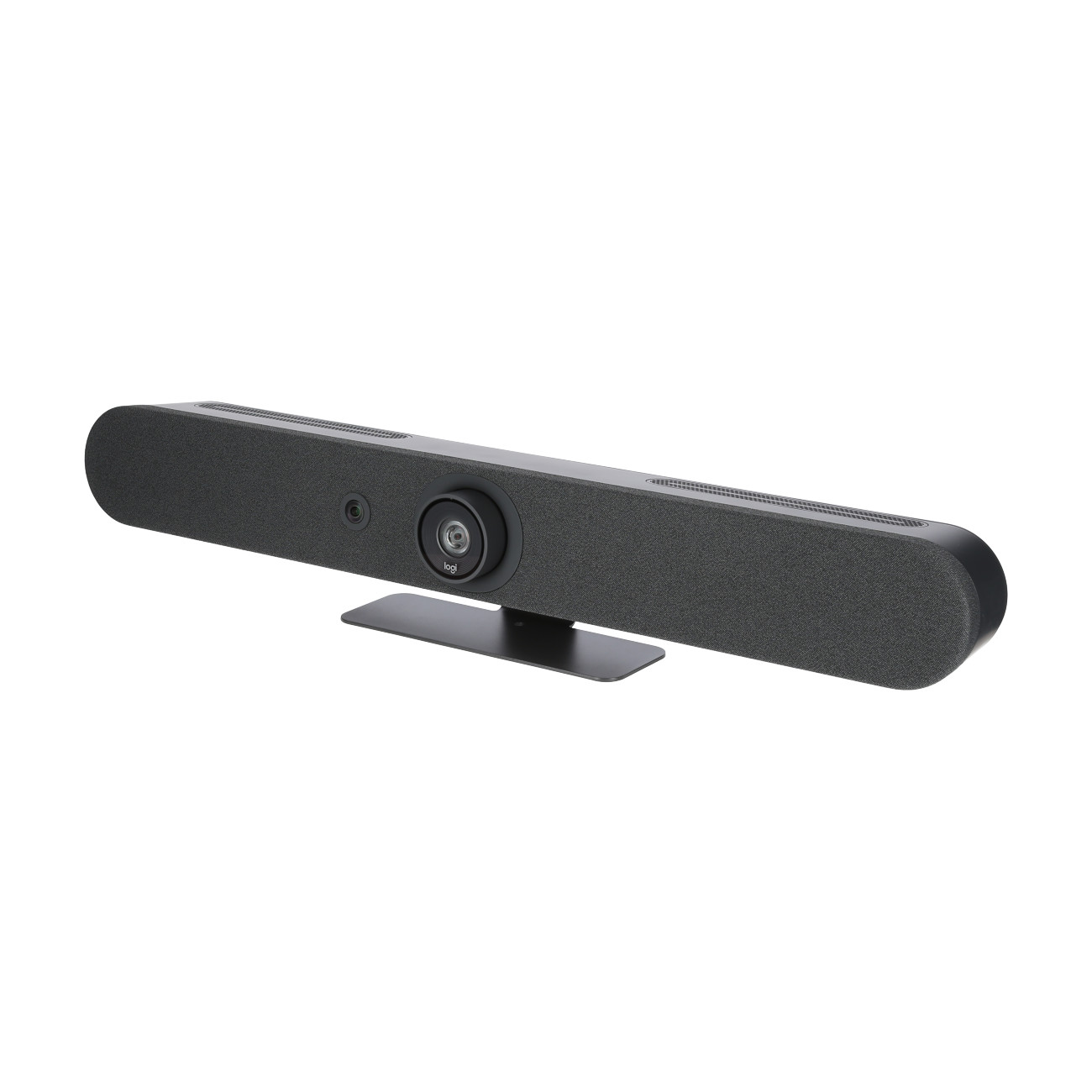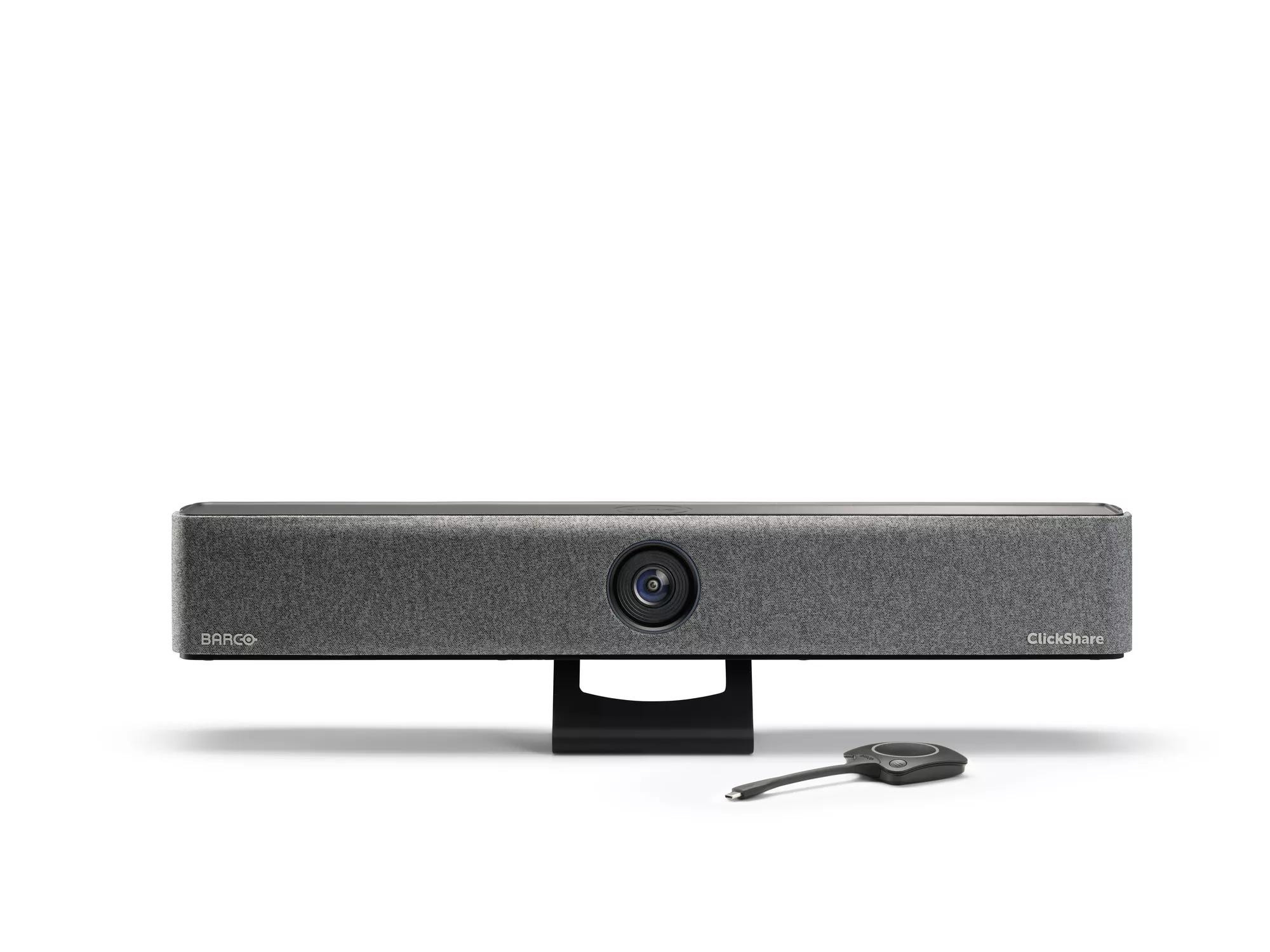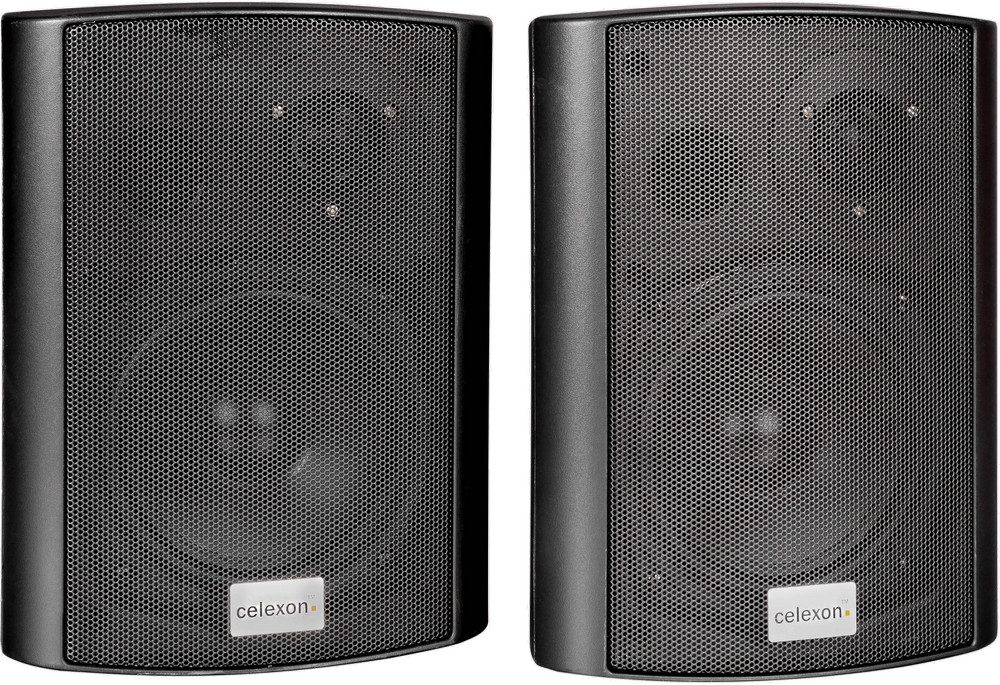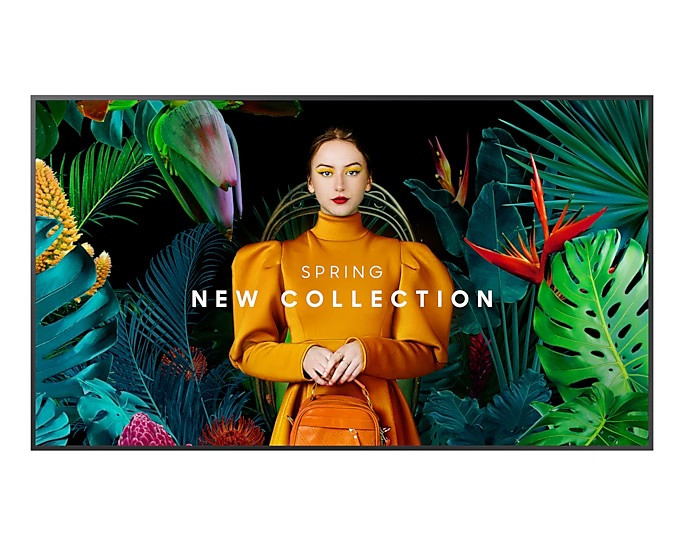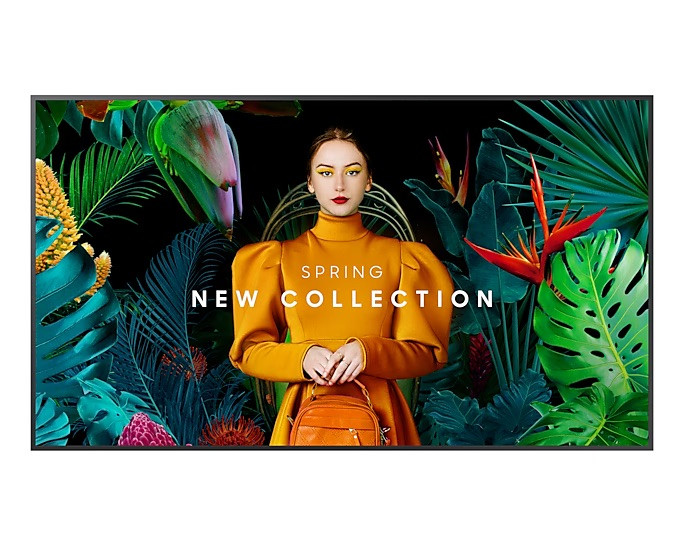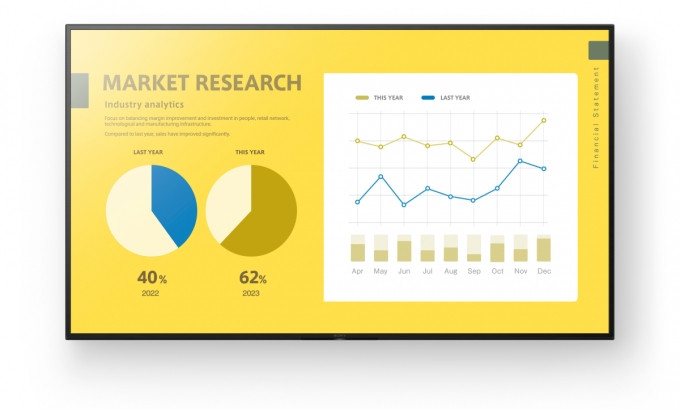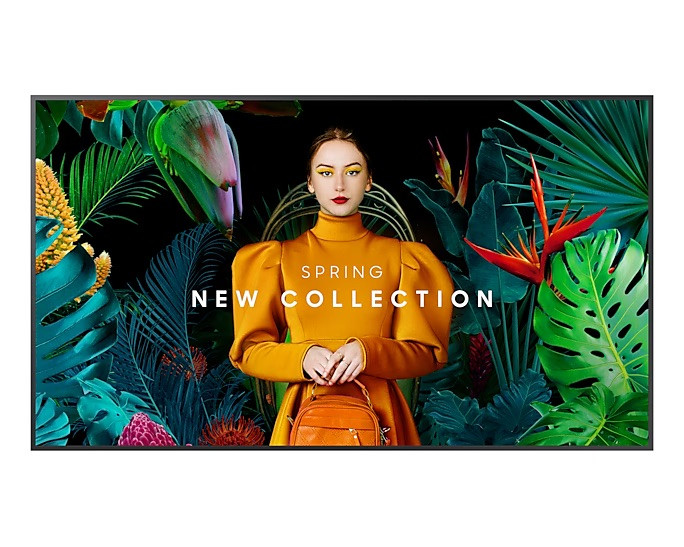































£1,329.27*
- Resolution 3840 x 2160 4K UHD
- Max. Brightness 350 cd/m²
- Panel type S-PVA
- Contrast Ratio 4,000 :1


Frequently purchased together
Product information
The QBC Series combines advanced professional features, optimised setup and maintenance, and stunning design to enhance any business environment. From enhancing collaboration to presenting rich content in new formats, QBC delivers innovation and efficiency to help organisations achieve their goals.
The UHD 4K display delivers innovation and efficiency with stunning design.
Experience the following highlights:
- Dynamic Crystal Colour with Quantum Processor 4K for incredible picture quality
- Slim and symmetrical design for a seamless environment
- Professional display with support for video calls and Smartview+
Unlock new display possibilities for your business
The QBC Series combines advanced professional features, streamlined setup and maintenance, and a stunning design to enhance any business environment. From enhancing collaboration to presenting rich content in new formats, QBC delivers innovation and efficiency to help businesses achieve their goals.
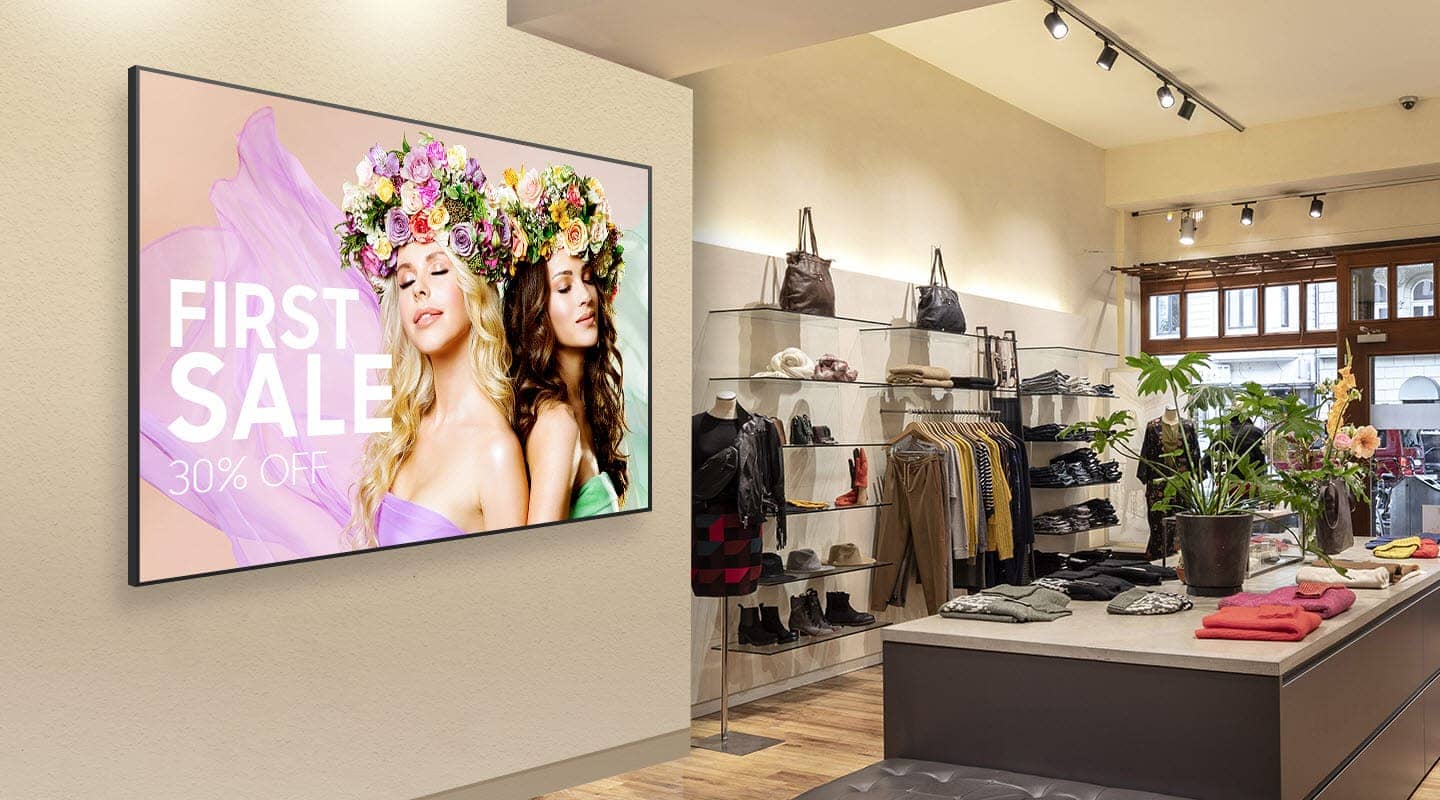
Experience true-to-life colour
Every image is more immersive with a billion shades of colour. Dynamic Crystal Color delivers true-to-life variations so customers can see every subtlety.
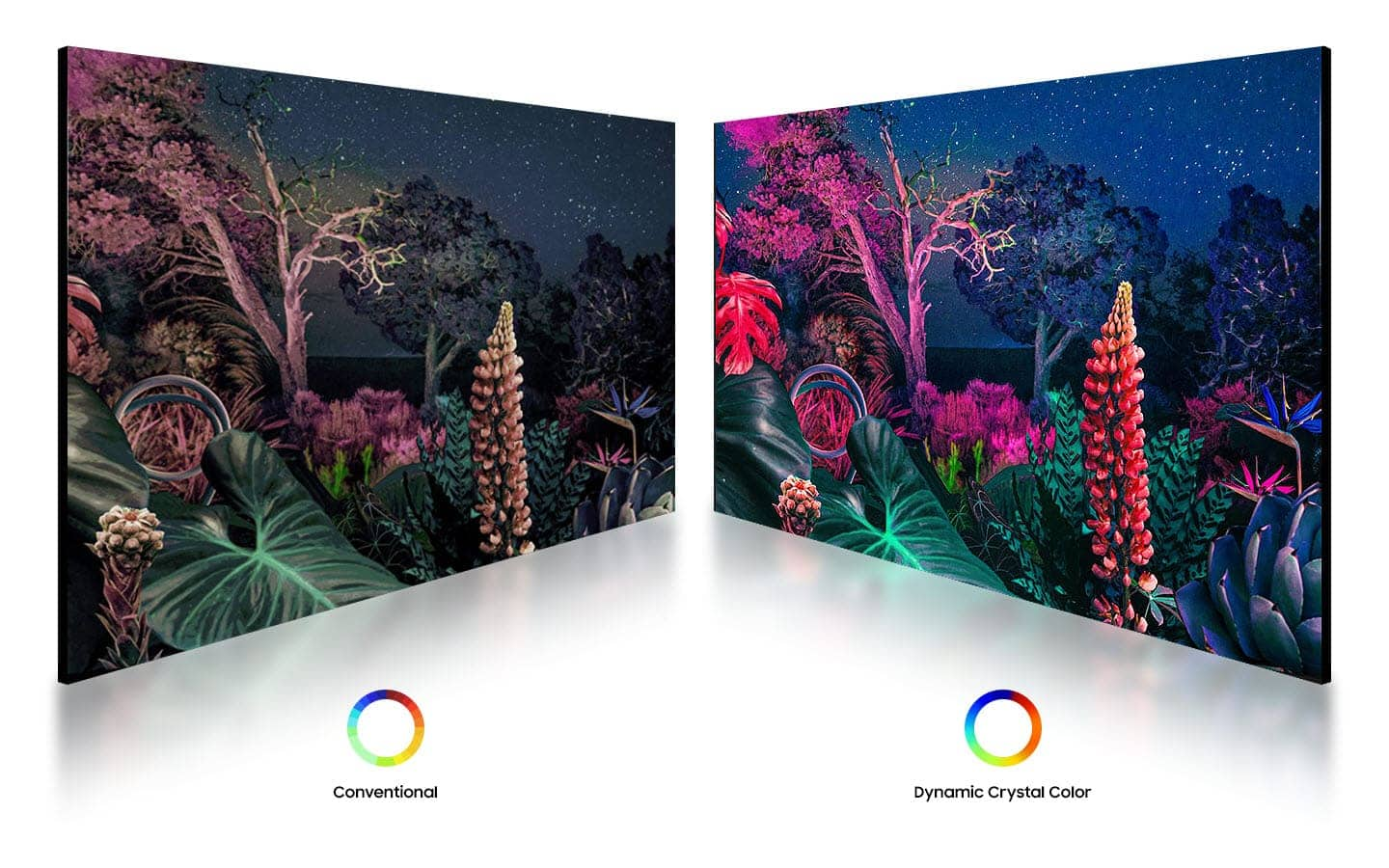
Experience true-to-life shades of colour in powerful 4K
Samsung's industry-leading video processing technology enhances every piece of content for clarity and consistency. Intelligent UHD upscaling technology, powered by Samsung's Quantum Processor 4K, upscales lower resolution video to UHD quality and delivers professional picture quality.
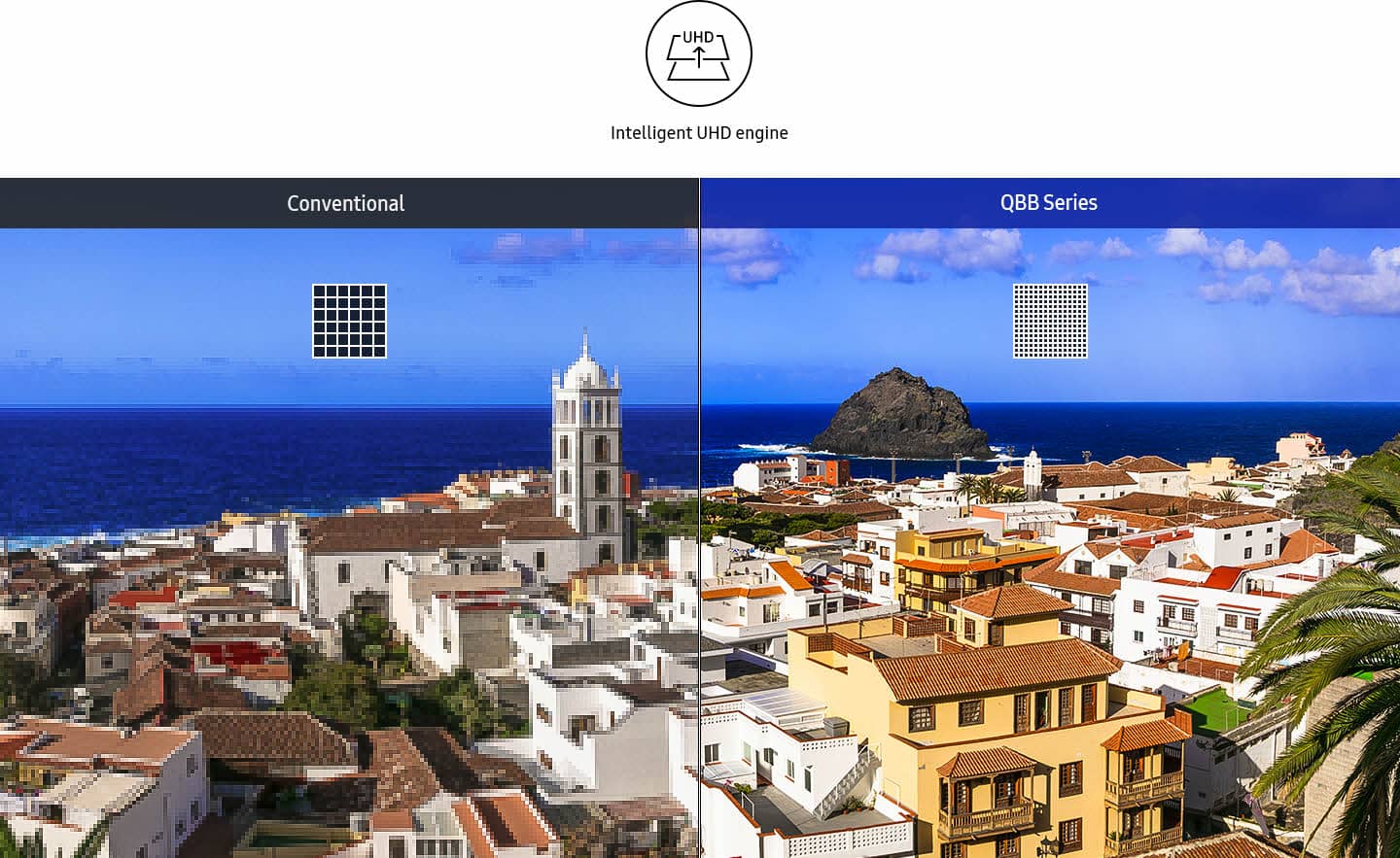
Slim design that maximises space
Slim bezels and a symmetrical design allow for seamless integration into any environment with simplified mounting and installation. To save space, all connections face outwards so the display hangs flush against any wall.
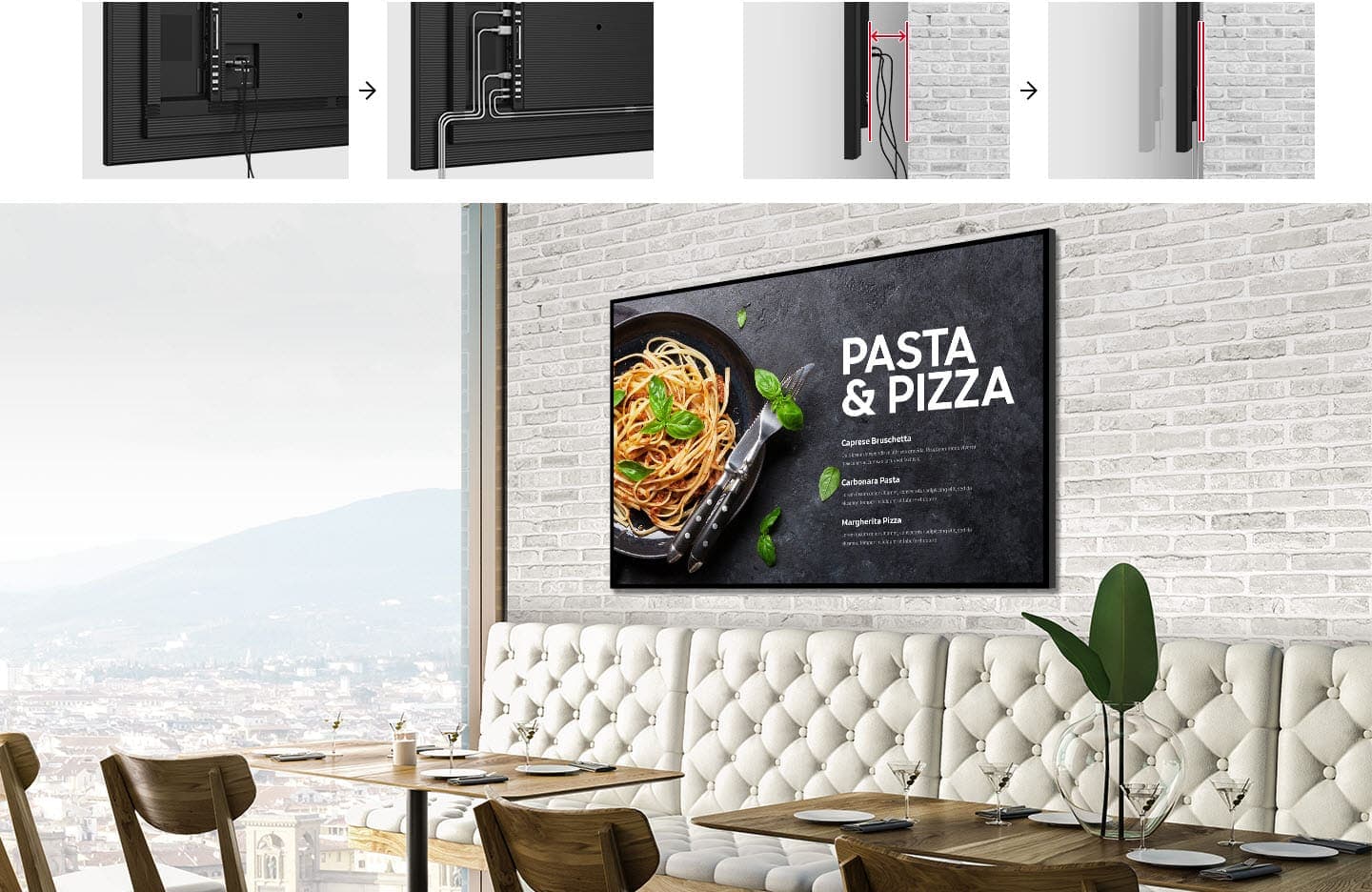
No obstructions to the viewing experience
QBC blends perfectly into any business environment. With the clean cable management feature, the screen draws maximum focus to what's on the display, not the cables connected to it.

Conduct conference calls without messy installations
Connect with colleagues without unnecessary connections. The QBC offers easier video conferencing than ever before, with a built-in video conferencing solution that supports the most popular web conferencing apps and enables simple video calls with just a USB webcam.
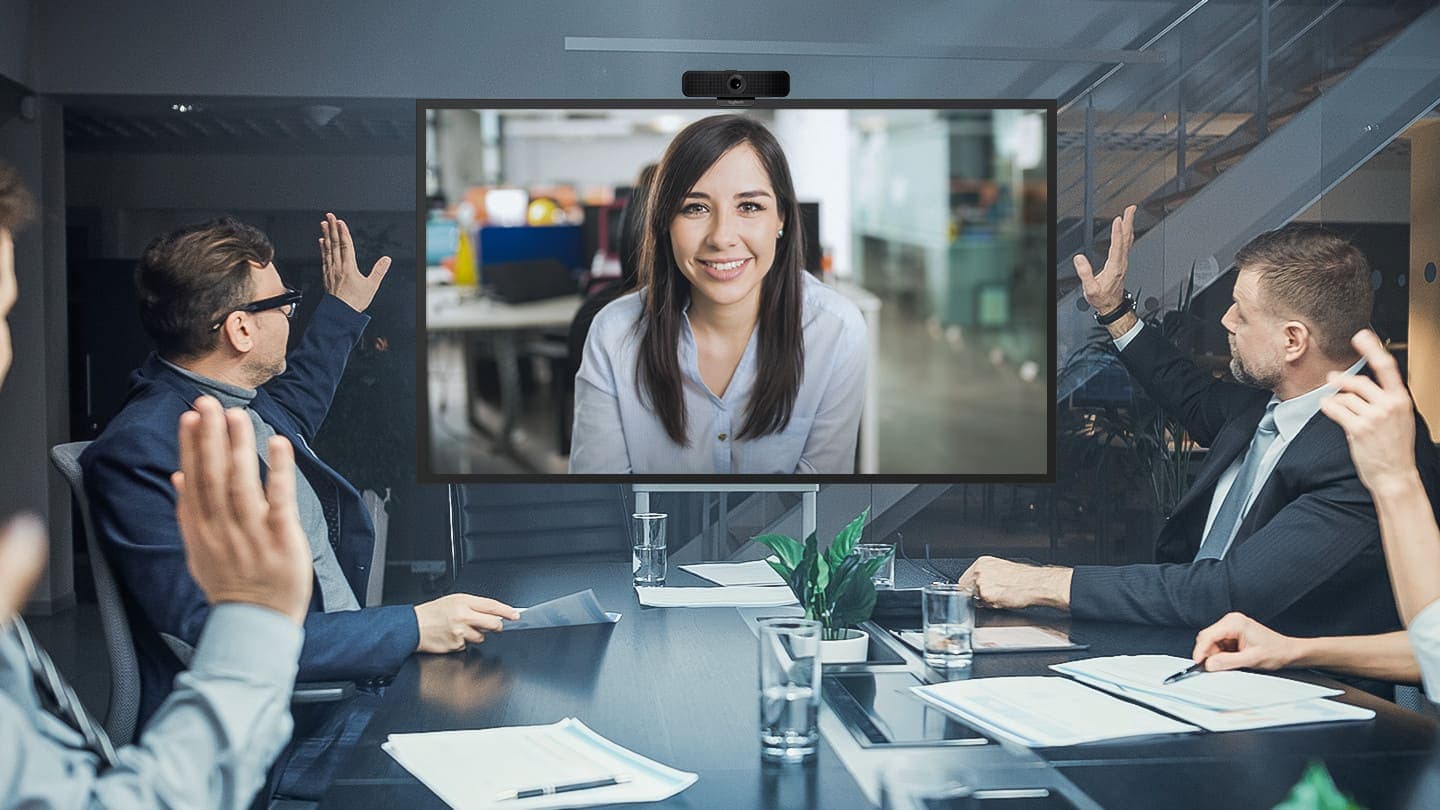
Collaborate across screens with wireless speed
SmartView+ enables wireless screen sharing without cable connections, ensuring unrestricted collaboration. Users can now activate the screen sharing feature at the start of a meeting, allowing the meeting administrator to quickly switch between screens with one click.
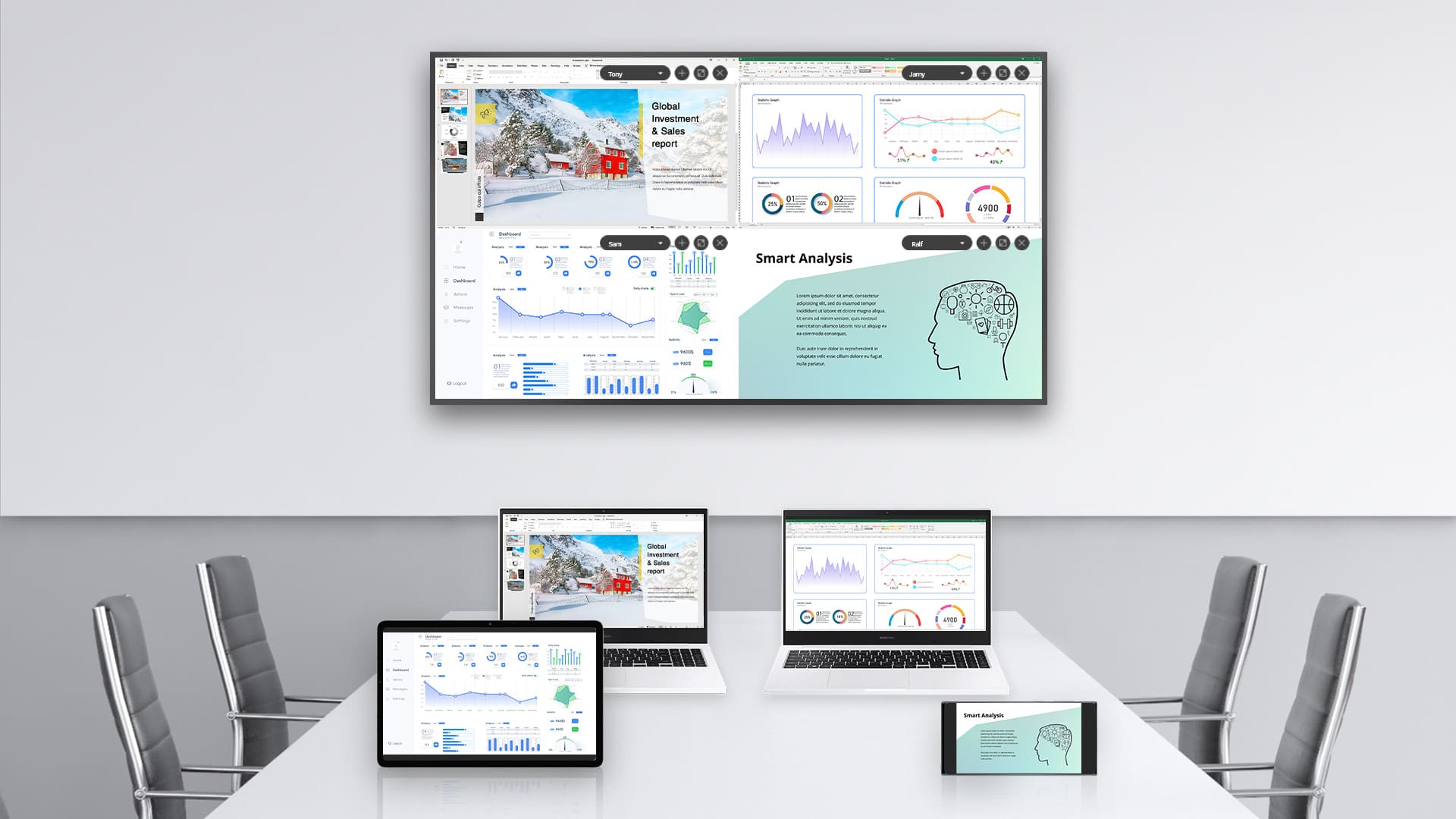
Maintain meeting room settings without unintentional changes
Custom Home is designed to simplify meeting room management and allows administrators to lock specific meeting room settings, preventing users from changing settings between meetings. Now conference rooms can function as intended all day, without errors, allowing IT to focus on other tasks.
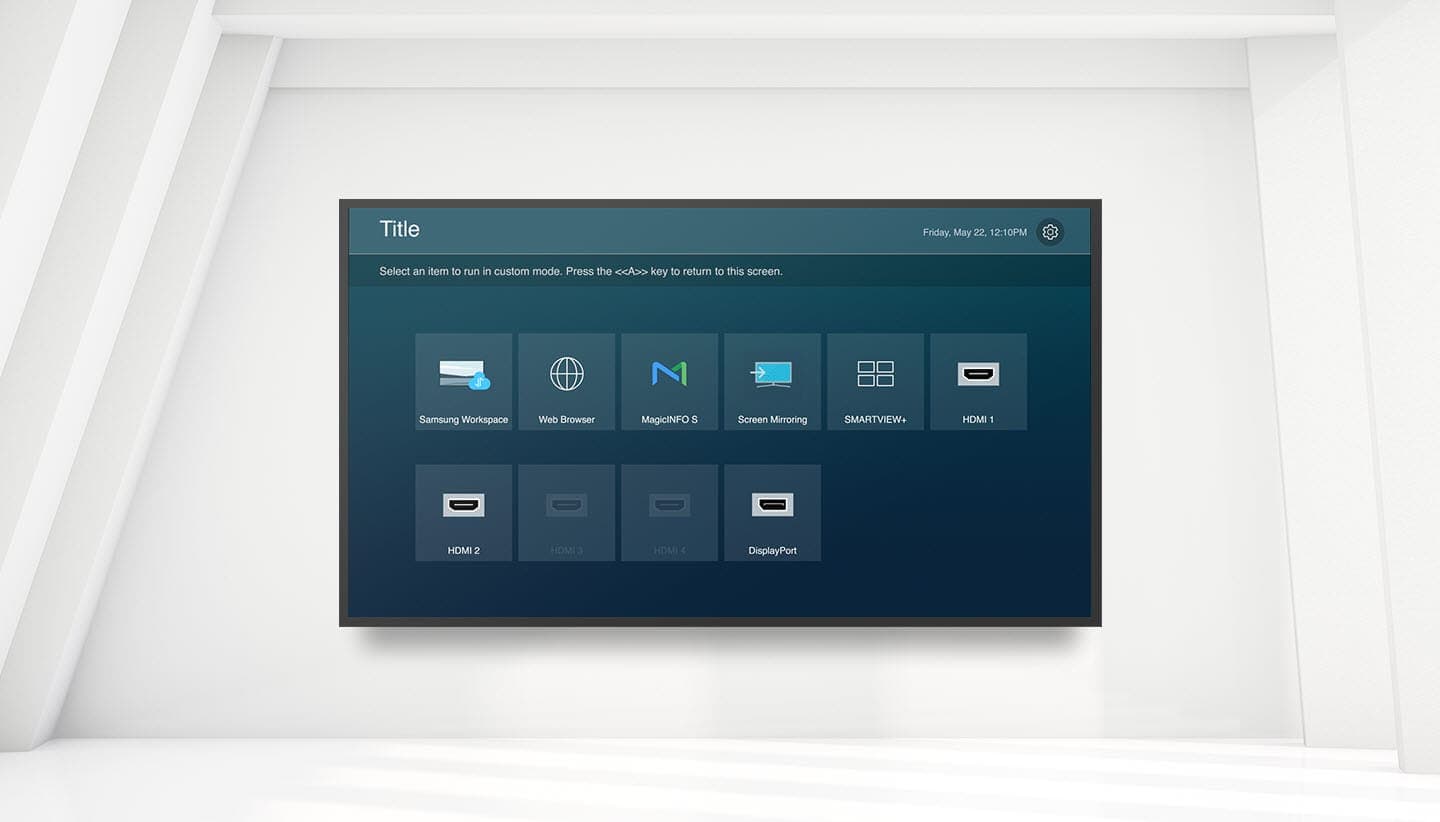
Enhance professional environments with expert tools
Integrated professional modes enable more capabilities in specific industries. Director mode minimises post-production and aligns content with the director's original intent. Medical teams can use the DICOM simulation mode to simulate medical images such as X-rays while meeting all the greyscale standards of DICOM.
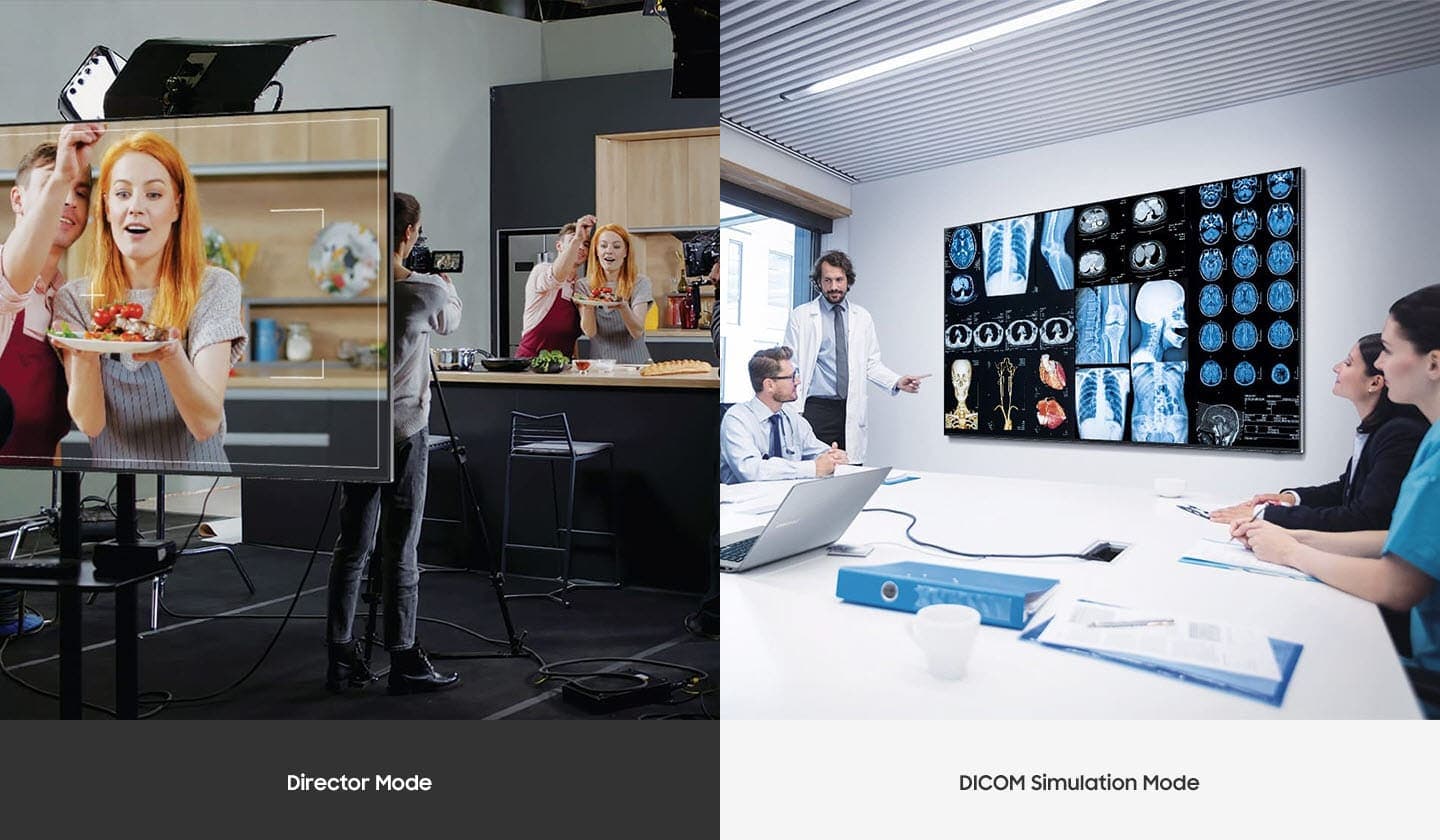
Simplify calibration between screens with mobile app
Guarantee complete brand consistency across any display in any location. With the Samsung mobile app, Smart Calibration ensures every display is calibrated correctly, displaying brand logos and other collateral materials in the exact colours required.

Easier setups and updates for reduced workloads
Tizen Zero Config is essential for IT managers operating multiple units in different locations. Once the display is installed, IT professionals can register and remotely install new apps via Tizen Business Manager, eliminating unnecessary travel and local installations.
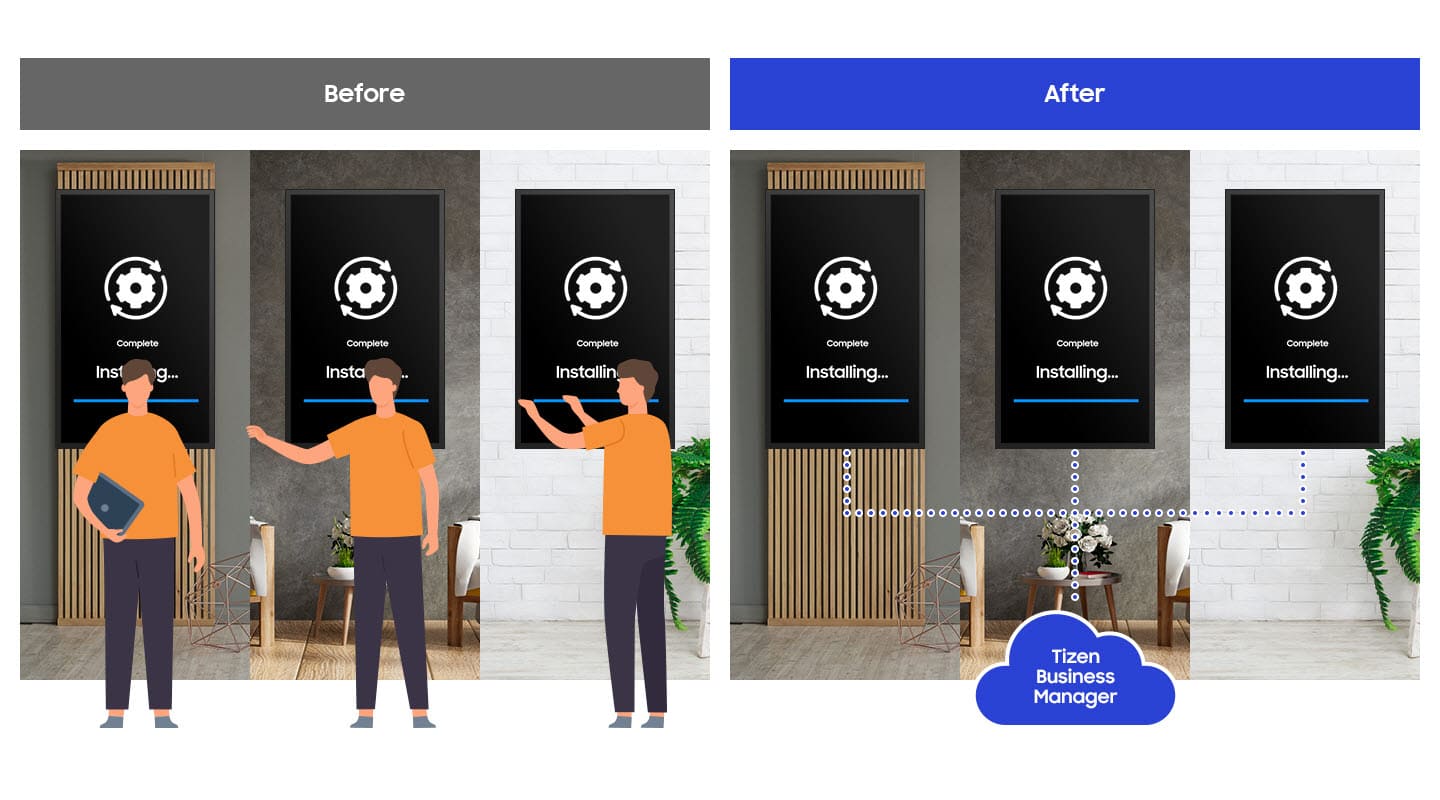
Supports the latest web-based content
Upload any content, no matter how innovative. QBC's continuous web engine upgrades allow unlimited playback of the latest types of content, enabling more diverse and engaging creative assets.

Flexible installation for custom designs
Keep content clear and stable. Auto Level automatically adjusts content when the screen is rotated from vertical to horizontal to increase versatility in any room. It also automatically detects incorrect swivel directions to always keep the display in the correct orientation.
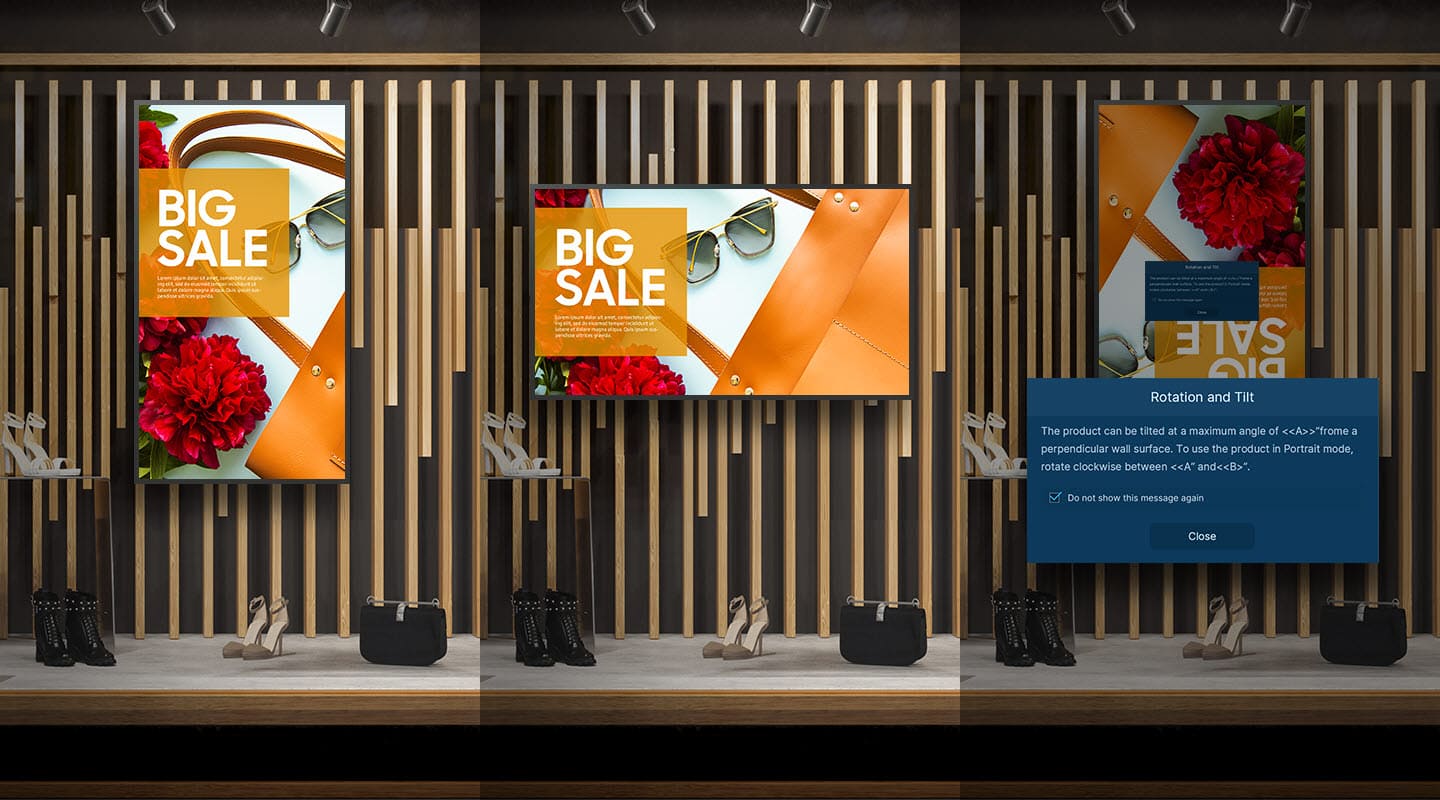
Eco-packaging and industry certification to make our world greener
The QBC Series uses recycled plastics for the back cover and packaging. In addition, Samsung has received certifications for energy savings and carbon footprint reduction and fulfils restriction guidelines for hazardous substances such as RoHS, REACH and WEEE.
Technical data
| Name | Samsung QB75C 75" Display |
|---|---|
| Article number | 1000030041 |
| GTIN/EAN | 8806094973952 |
| Manufacturer SKU | LH75QBCEBGCXEN |
| Model name | QB75C |
| Brand | Samsung |
| Product Type | Non-Touch Display |
| Product Series | Samsung QB Series |
| Technology | LCD |
| Panel type | S-PVA |
| Resolution | 3840 x 2160 4K UHD |
| Diagonal | 75" |
| Aspect Ratio | 16:9 |
| Viewing angle - Horizontal | 178° |
| Viewing angle - Vertical | 178° |
| Contrast Ratio | 4,000 :1 |
| Screen finish | Matt |
| Max. Brightness | 350 cd/m² |
| run-time | 16/7 |
| Response time | 8ms |
| Haze Level | 25% |
| Support - VESA | 400 x 400 |
| Frame width | 11.5 mm |
| Inputs | 1x Ethernet , 1x HDMI , 1x RS232 , 1x USB-A |
| Outputs | 1x 3,5mm Jack |
| wireless technology | Bluetooth , Miracast , WiFi |
| Features | Integrated speaker , Portrait Mode |
| Product width | 168.32 cm |
| Product height | 96.04 cm |
| Product depth | 2.85 cm |
| Weight | 28 kg |
| Colour | Black |
| EEK Spectrum | A to G |
| Delivery contents | Batteries , Power cable , Remote control |
| Condition | New |
| Warranty | 36 Month |
| Warranty type | Onsite Repair Service and support information |
Product safety
| Person responsible for the EU |
|---|
| Samsung Electronics GmbH |
| Am Kronberger Hang 6 |
| 65824 Schwalbach |
| Germany |
| sseg.comm@samsung.com |




